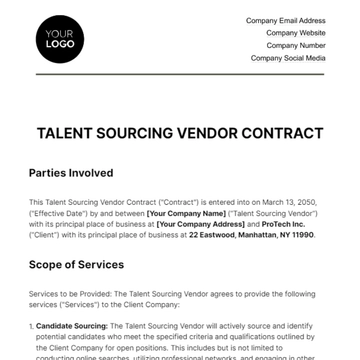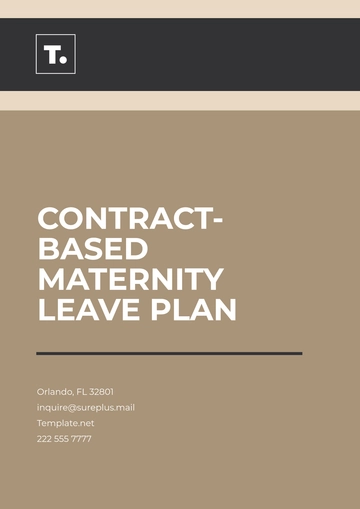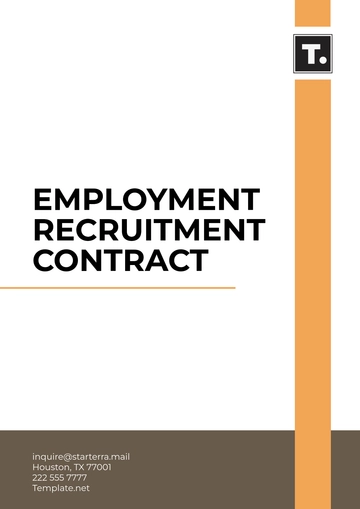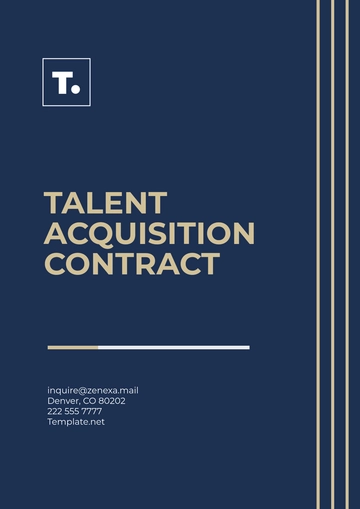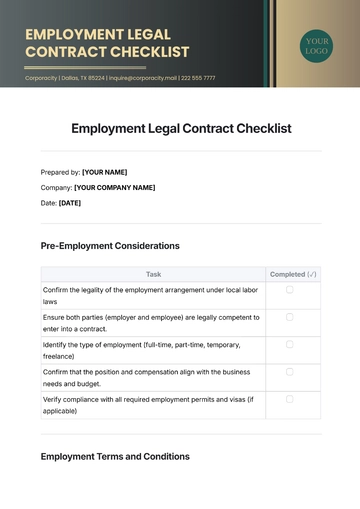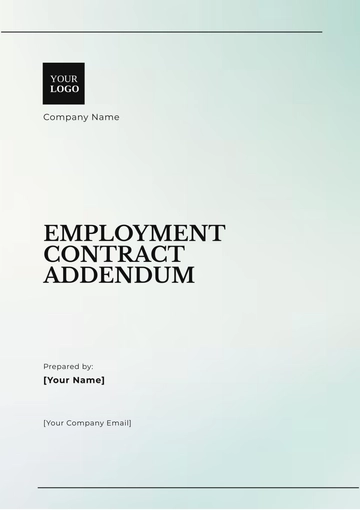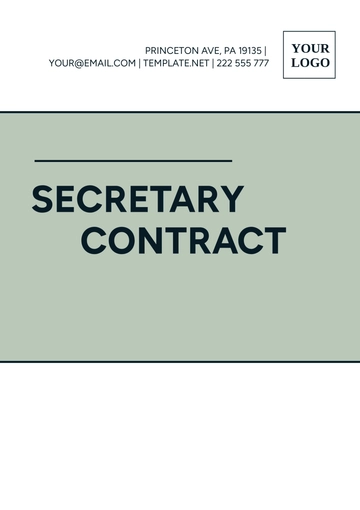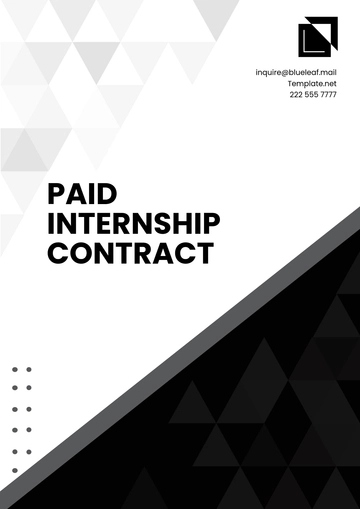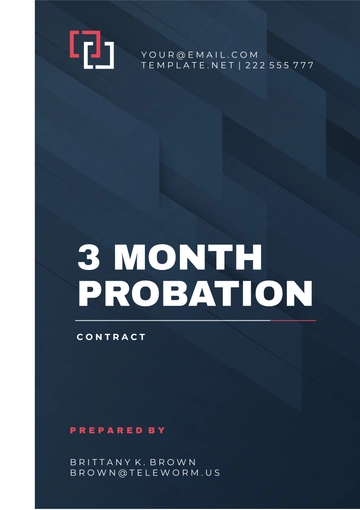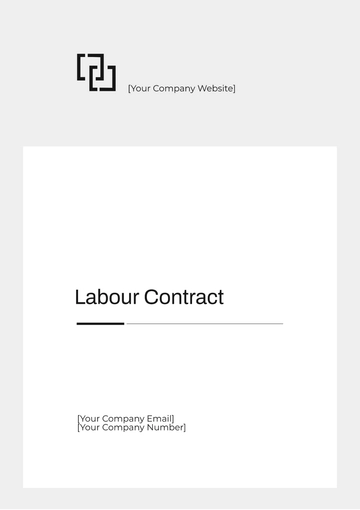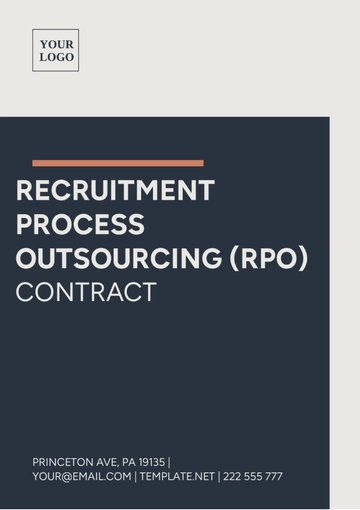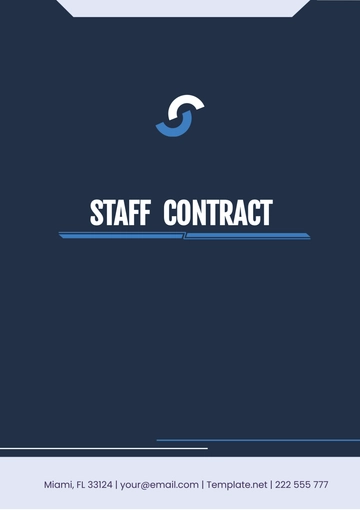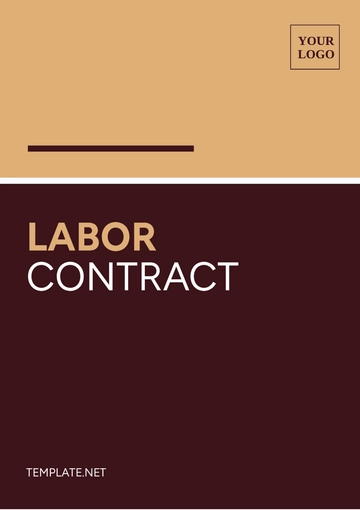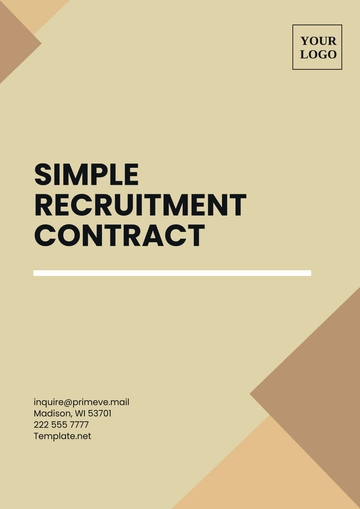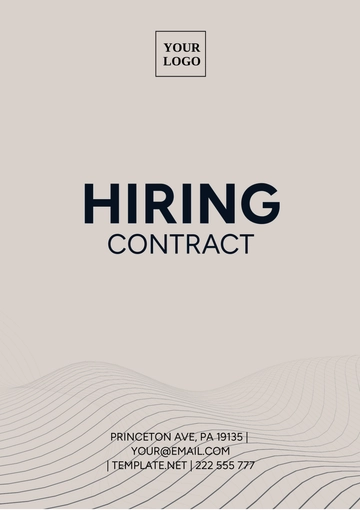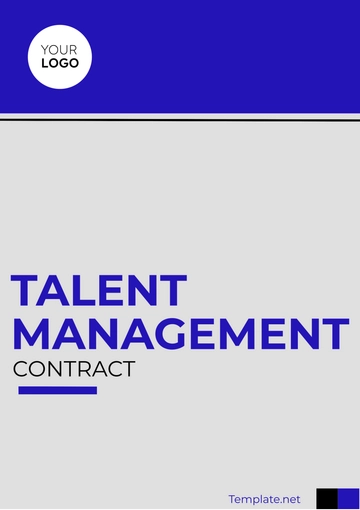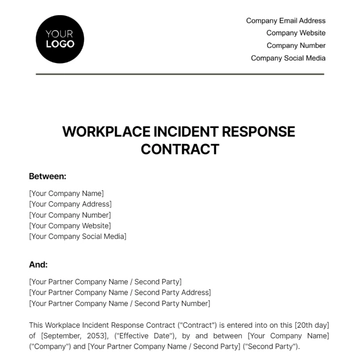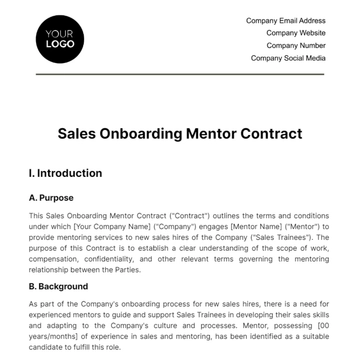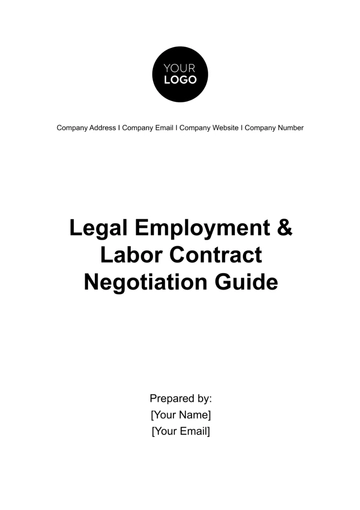Free Comprehensive Employee Contract Manual HR
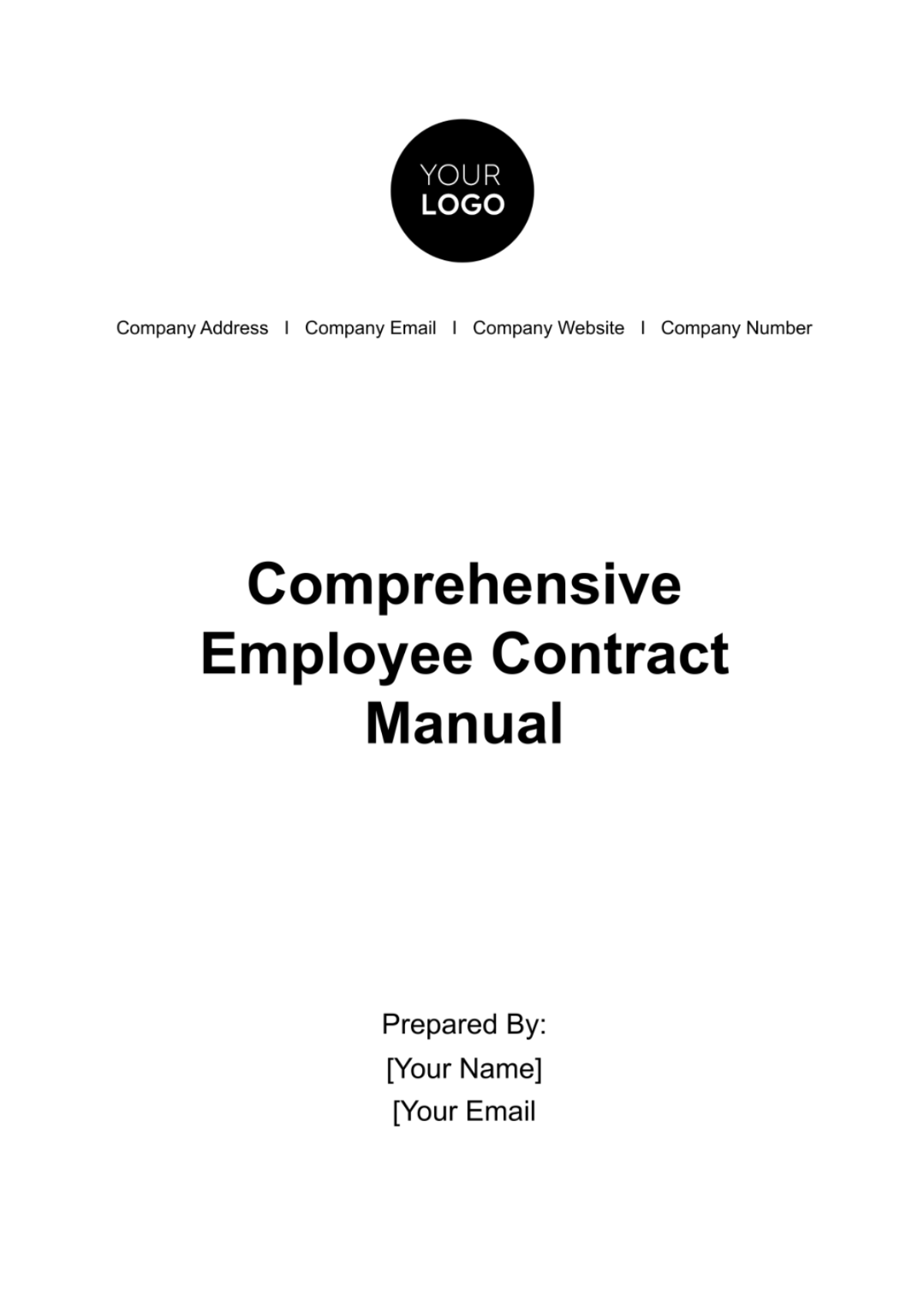
TABLE OF CONTENTS
Introduction ....................................................................................................................3
Purpose of the Manual ..................................................................................................3
Key Terms .......................................................................................................................4
Components of an Employee Contract ........................................................................5
Sample Employee Contract............................................................................................7
Updating and Renewing Contracts ..............................................................................9
Triggers for Updating Contracts .................................................................................10
Process for Updating Contracts .................................................................................10
Contract Renewals .......................................................................................................11
Termination Procedures ...............................................................................................11
Grounds for Termination ..............................................................................................11
Notification Procedures ...............................................................................................12
Final Settlement and Exit Formalities .........................................................................12
Post-Termination Assistance ......................................................................................13
Conclusion....................................................................................................................13
Introduction
Welcome to [Your Company Name]'s Employee Contract Manual. Employment contracts serve as a critical foundation for the employer-employee relationship, establishing mutual expectations, rights, and obligations. They ensure that both parties are aligned in their understanding and create a basis for trust and commitment.
This guide aims to provide a clear and cohesive understanding of the employment contracts within our organization, ensuring that every relationship with our esteemed employees starts with clarity and mutual understanding.
Purpose of the Manual
Contracts form the bedrock of employer-employee relationships, and the purpose of this manual is manifold:
Offer a systematic approach to creating, reviewing, and comprehending employment contracts, ensuring uniformity across all departments.
Guarantee that all contractual obligations and rights adhere to regional and national employment laws, safeguarding the company from potential legal disputes while also protecting employee rights.
Foster a culture of openness and equity by making the terms and conditions of employment crystal clear to all parties involved, eliminating ambiguities that might lead to misunderstandings or disputes.
Equip HR personnel, hiring managers, and employees with knowledge and guidelines. A well-informed employee is an empowered one, and by understanding their contract, they can perform at their best with peace of mind.
We encourage all staff involved in the recruitment, onboarding, and management process to familiarize themselves with this manual, ensuring that our practices remain consistent and are in the best interests of both [Your Company Name] and our employees.
Key Terms
The world of employment contracts is rife with specific terminologies that help articulate mutual expectations succinctly. Below are some key terms and their definitions that frequently feature in our contracts:
TERM | DEFINITION |
Employee | An individual formally hired by [Your Company Name] to undertake specific roles and tasks. |
Employer | [Your Company Name] or its appointed representative overseeing the employment relationship. |
Commencement Date | The official start date of the employee's tenure with the company. |
Termination Date | The predetermined or eventual end date of an employee’s association with the company. |
Compensation | Total remuneration package, including salary, bonuses, benefits, and other financial rewards. |
Probationary Period | An initial phase during which the employee's performance and fit within the company are assessed. This period offers flexibility for both parties to decide on long-term association. |
Non-compete Clause | An agreement where the employee pledges not to enter into competition against the company or work for a competitor for a specified duration post-employment. |
Confidentiality Agreement | A commitment by the employee to safeguard and not disclose the company's proprietary and confidential information. |
Benefits | Non-salary compensation which might include health insurance, retirement plans, paid time off, and other perks. |
Performance Metrics | Criteria set by the company to evaluate an employee's performance, which can influence bonuses and promotions. |
Contract Renewal | The process of extending an employment contract beyond its initial term. |
Termination Grounds | Specific reasons or conditions under which the employment contract can be ended. |
Components of an Employee Contract
An employment contract, at its core, is a carefully crafted document that establishes a clear understanding between [Your Company Name] and its employees. To ensure all aspects of the employer-employee relationship are covered, and to maintain the company's standards of transparency and professionalism, each contract must contain the following essential components:
Identification of Parties: This section specifies the names of both the employee and the employer, making it clear who is entering into this formal agreement. It typically includes the full legal name of the employee and [Your Company Name].
Commencement and Duration: Two key dates are highlighted:
Commencement Date: The day on which the employee's official tenure begins.
Duration: Whether the role is for a fixed term or ongoing. If there's an end date or the tenure is project-based, it must be clearly defined.
Job Description and Responsibilities: A thorough delineation of the employee's role, which encompasses:
Title: The official designation of the employee.
Duties: Detailed list of tasks, functions, and expectations associated with the role.
Department: The segment of the company where the employee will operate.
Compensation and Benefits: This crucial section outlines:
Base Salary: The fixed amount the employee will receive, usually specified on a monthly or annual basis.
Bonuses or Incentives: Any performance-based or other bonuses, detailing the criteria and calculation methods.
Benefits: Descriptions of non-salary perks, such as health coverage, retirement plans, or company-provided tools and devices.
Probationary Period: If applicable, the initial phase is outlined during which the employee's alignment with the company's culture and performance standards is assessed.
Work Schedule: Details about the employee's working hours, overtime conditions, and any flexible working arrangements available.
Confidentiality and Non-compete Clauses: Clear guidelines on what company information is deemed proprietary and restrictions on working with competitors or starting a competing business, if applicable.
Leave and Absences: Information on paid time off, sick leaves, vacation policies, and other leave-related provisions.
Performance Reviews: The frequency and criteria of employee evaluations, detailing the mechanisms for feedback and potential promotions or increments.
Termination Provisions: A comprehensive section that:
Enumerates grounds for potential termination, both from the employee and employer perspectives.
Specifies notice periods, severance packages (if any), and other related conditions.
Dispute Resolution: Mechanisms or steps in place to resolve any disagreements or conflicts that might arise during the employment tenure.
Signatures: Spaces for both parties—employee and the authorized representative of [Your Company Name]—to sign, validating the agreement's terms.
By meticulously detailing each of these components, [Your Company Name] ensures that each contract is a transparent and mutually beneficial document that nurtures the professional relationship between the company and its dedicated workforce.
Sample Employee Contract
EMPLOYMENT AGREEMENT This agreement ("the Agreement") is made and entered into as of [Date: January 1, 2051], by and between [Your Company Name], a registered corporation under [Jurisdiction/Country], herein referred to as the "Employer", and [Name of Employee], residing at [Employee Address], herein referred to as the "Employee". Article I: Identification of Parties Employer: [Your Company Name], headquartered at [Your Company Address]. Employee: [Name of Employee], holding [National Identification/SSN: XXX-XX-XXXX]. Article II: Position and Responsibilities Title: Software Developer. Department: Research and Development. Key Responsibilities:
Article III: Terms of Employment Commencement Date: January 1, 2051. Duration: Continuous, subject to terms of termination as outlined in Article VIII. Article IV: Compensation and Benefits Base Salary: $80,000 per annum, payable in monthly installments. Performance Bonus: Up to 10% of the base salary, based on achieving specific metrics outlined in the attached Performance Metrics Addendum. Benefits:
Article V: Probationary Period The first six months of employment will be considered a probationary period. During this time, both parties can assess suitability and may terminate the contract with two weeks' notice. Article VI: Work Schedule and Location Standard working hours: Monday to Friday, 9:00 AM to 5:00 PM. Location: [Your Company Name] headquarters, with options for remote work up to two days a week. Article VII: Confidentiality and Non-compete
Article VIII: Termination Provisions By Employee: The Employee may terminate this agreement with a one-month written notice. By Employer: The Employer may terminate the contract due to misconduct, breach of confidentiality, or underperformance, following a written warning and a 30-day notice period. Article IX: Dispute Resolution Any disputes arising from this contract will first be addressed through mediation. If unresolved, legal action may be pursued in the jurisdiction of [Your Company Name]'s registration. Signatures: By signing below, both parties acknowledge and agree to the terms laid out in this Agreement. [Your Company Name] Representative [Name of Employee] Date: _______________ Date: _______________ |
This sample employment contract serves as a foundational template. Individual contracts might have variations based on the specific role, department, or other unique considerations. It is always recommended to consult with [Your Company Name]'s legal team when drafting or revising contracts.
Updating and Renewing Contracts
In a dynamic business environment, [Your Company Name] recognizes the importance of adaptability and evolution. Our employment contracts, therefore, are not static documents but are designed to grow and evolve, reflecting changes in company objectives, employee roles, and the broader industry landscape. Here's how we approach the processes of updating and renewing these crucial agreements:
Triggers for Updating Contracts
There are several circumstances that might necessitate an update to an employment contract:
TRIGGER | DEFINITION |
Role Evolution | A significant change in an employee’s responsibilities or position. |
Regulatory and Legal Changes | Necessary adaptations to remain compliant with new or revised employment laws and regulations. |
Company Policy Revisions | Updates due to substantial modifications in company policies, benefits, or compensation structures. |
Employee Status Changes | Transitions such as from part-time to full-time or from a contractor status to a permanent employee. |
Feedback from Stakeholders | Insights from employees, HR professionals, or legal advisors that point towards areas needing enhancement or clarity in the existing contract. |
Process for Updating Contracts
STEP | DEFINITION |
Review and Analysis | Conduct periodic checks, ideally annually, to ensure the contract's content remains relevant and compliant. |
Stakeholder Consultation | Engage with the concerned employee, their department head, HR, and occasionally, legal advisors, to gather feedback. |
Drafting Revisions | Based on feedback and review, make the necessary changes to the contract. |
Review by Legal Team | Ensure that the changes are legally sound and in line with industry best practices. |
Discussion with Employee | Present the updated terms to the employee, discuss, and ensure mutual understanding and agreement. |
Finalization and Sign-off | Once both parties agree on the revisions, sign the updated contract, rendering it active and replacing the older version. |
Contract Renewals
As some employment contracts are set for a specific duration, renewals become necessary when both the employer and employee wish to extend the relationship:
STEP | DEFINITION |
Evaluation | Conduct a comprehensive performance review and feedback session with the employee before the end of the contract. |
Discussion on New Terms | Highlight and discuss any potential changes or adjustments needed in the renewed contract, such as compensation, role changes, or added benefits. |
Drafting the Renewed Contract | Use the agreed-upon changes to draft a fresh contract for the upcoming period. |
Review and Approval | Have the legal team review the newly drafted contract to ensure its compliance with legal norms and its validity. |
Signing | Both the employer and the employee sign the renewed contract, making it the active agreement for the specified duration. |
In every step of updating or renewing a contract, [Your Company Name] remains committed to transparency, mutual respect, and ensuring that our agreements are both fair and reflective of the value we place on our employees. Regular evaluations and revisions not only keep our contracts up-to-date but also signify our continuous commitment to nurturing the professional growth of our team.
Termination Procedures
The end of an employment relationship can arise for various reasons. Regardless of the cause, [Your Company Name] prioritizes ensuring that the termination process is respectful, transparent, and aligns with best practices and legal requirements. Here's a comprehensive overview of our approach:
Grounds for Termination
Performance Issues: Repeated failure to meet job expectations despite feedback and opportunities for improvement.
Misconduct: Violations of company policies, including harassment, theft, or other serious behavioral issues.
Economic Reasons: Business downturns, budget cuts, or organizational changes resulting in the elimination of certain roles.
Mutual Agreement: Both the employer and the employee agree, for various reasons, that it's best to end the employment relationship.
Contract Expiry: The end of a fixed-term contract without the intention or possibility of renewal.
Notification Procedures
Ensuring clear communication is crucial during the termination process. Here's our approach:
Initial Meeting: A face-to-face meeting between the employee, their supervisor, and an HR representative to discuss the reasons for termination.
Written Notice: A formal letter detailing the grounds for termination, last working day, and any other relevant details.
Feedback Opportunity: Provide an avenue for the employee to share their perspective, either in the meeting or in a written format.
Final Settlement and Exit Formalities
Concluding the employment relationship requires certain administrative and financial settlements:
Final Paycheck: Ensuring the employee receives all outstanding pay, including unused leave, bonuses, or commissions, if applicable.
Return of Company Property: Collect company assets such as ID cards, laptops, or any other equipment provided during employment.
Exit Interview: A session where the employee can share experiences, insights, and feedback from their tenure at the company.
Release of Documents: Providing necessary documents like experience letters, service certificates, or any other requested records.
Post-Termination Assistance
[Your Company Name] is committed to supporting employees even after the end of the employment relationship:
Counseling and Support: Offering counseling or emotional support, especially in cases of large-scale layoffs or business downturns.
Career Transition Services: Assisting in updating resumes, providing references, or introducing job placement services.
Training and Skill Development: Providing access to training resources or courses that can assist the employee in securing future opportunities.
Conclusion
In this manual, we've provided a detailed outline of the employee contract procedures at [Your Company Name]. Our commitment is to uphold transparency, fairness, and mutual respect in all aspects of our employment relationship.
By adhering to the guidelines and best practices presented here, we aim to cultivate a harmonious workplace where both employees and the organization can thrive. As the landscape of employment evolves, we pledge to keep this manual relevant, ensuring that our practices remain aligned with both our core values and the best interests of our workforce.
- 100% Customizable, free editor
- Access 1 Million+ Templates, photo’s & graphics
- Download or share as a template
- Click and replace photos, graphics, text, backgrounds
- Resize, crop, AI write & more
- Access advanced editor
Clear terms build strong relationships and bolsters trust. With the use of our Comprehensive Employee Contract Manual HR Template, you’ll have in your hands an easy-to-use template blueprint that offers a thorough guide for drafting employee contracts. Covering roles, responsibilities, benefits, and more, it ensures transparency and understanding from day one. Get it today!
You may also like
- Rental Contract
- Contractor Contract
- Contract Agreement
- One Page Contract
- School Contract
- Social Media Contract
- Service Contract
- Business Contract
- Restaurant Contract
- Marketing Contract
- Real Estate Contract
- IT Contract
- Cleaning Contract
- Property Contract
- Supplier Contract
- Partnership Contract
- Food Business Contract
- Construction Contract
- Employment Contract
- Investment Contract
- Project Contract
- Payment Contract
- Student Contract
- Travel Agency Contract
- Startup Contract
- Annual Maintenance Contract
- Employee Contract
- Gym Contract
- Event Planning Contract
- Personal Contract
- Nursing Home Contract
- Law Firm Contract
- Work from Home Contract
- Software Development Contract
- Maintenance Contract
- Music Contract
- Amendment Contract
- Band Contract
- DJ Contract
- University Contract
- Salon Contract
- Renovation Contract
- Photography Contract
- Lawn Care Contract
